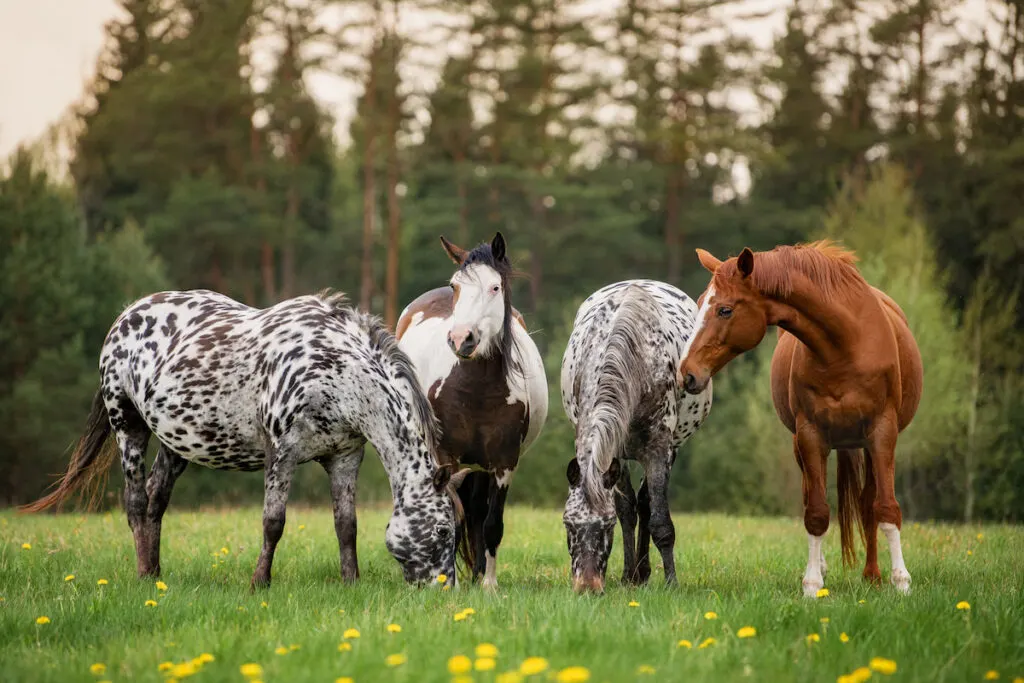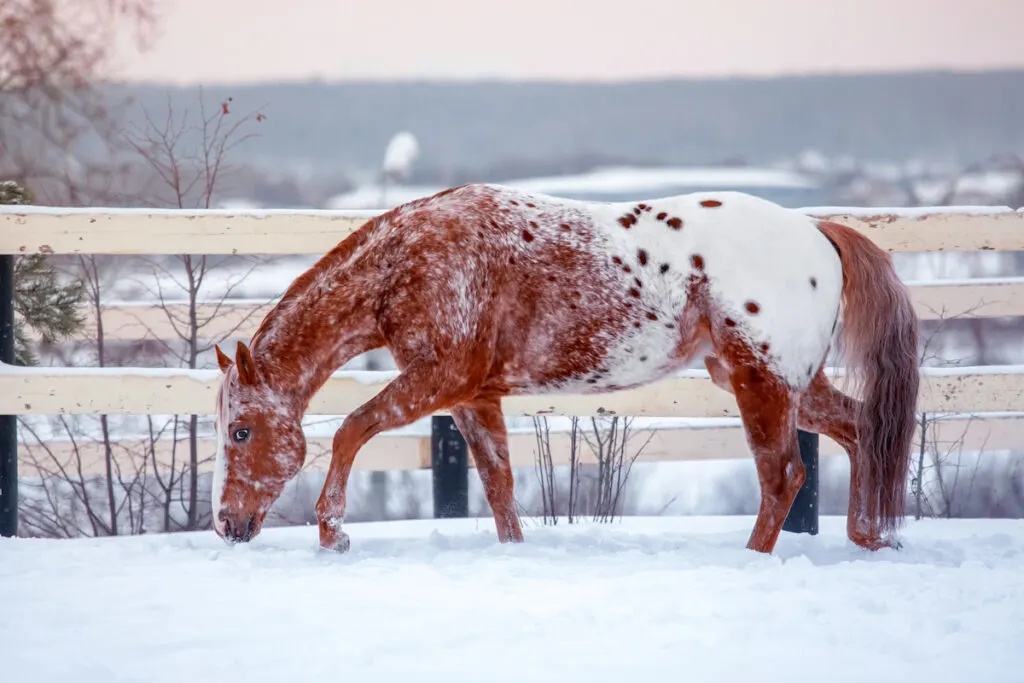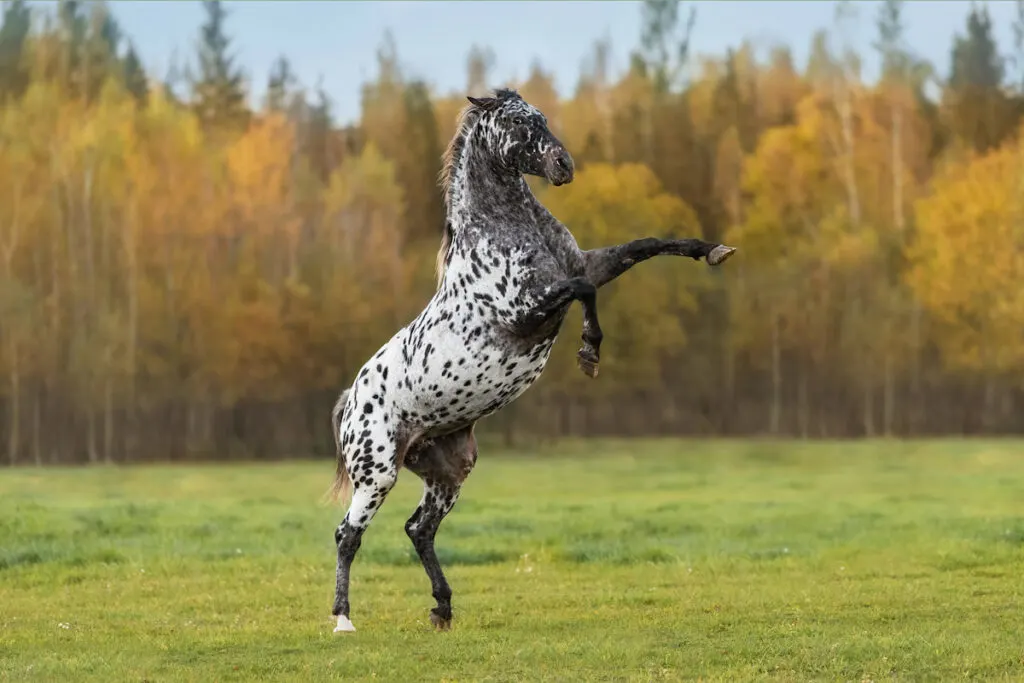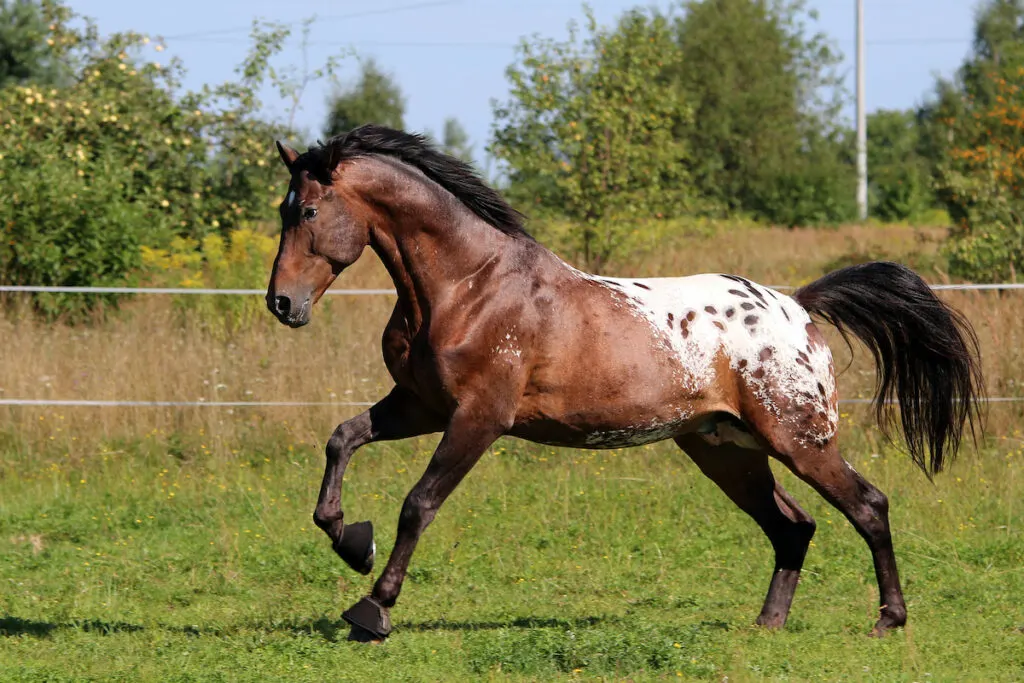As one of the oldest horse breeds, the Colorado Rangerbred has been a key part of life in Western homesteads. The breed has become one of the most sought-after horses for ranches, trails, and rodeos and for good reason.
The Colorado Rangerbred’s notoriously intelligent nature and great cow sense are packaged in an athletic and beautiful exterior, making them a highly coveted breed for a variety of equestrian disciplines.
Interested in learning more about the Colorado Rangerbred horse breed? This article examines the history, features, and uses of this magnificent horse breed.
Read on to discover what makes the Colorado Ranger horses so special.

Table of Contents
The History of the Colorado Rangerbred Horse
The history of the Colorado Rangerbred horse dates back to 1878 when the then U.S President, General Ulysses Grant, visited Turkey as part of his world tour.
On the day of departure, his host Sultan Abdul Hamid gifted him with two fine desert stallions as a token of their friendship.
One of the horses was an Arabian stallion called Leopard and the other was a gray Barb called Linden Tree.
The stallions arrived in the U.S. in early 1879 and immediately gained the attention of Randolph Huntington, one of America’s greatest horse breeders.
Mr. Randolph used the stallions to develop a new breed of light harness horses, but the project was later discontinued when horseless carriages became popular.
In 1894, 15 years after the stallions arrived in the US, the two stallions moved to Nebraska, and this is where breeders laid the foundation for the Colorado Ranger.
General L.W Colby, persuaded his friend, President Grant to let him bring the stallions to his ranch. The two desert stallions sired foals with the mares on the Colby ranch.
The foals were either spotted or uniquely colored, and it wasn’t long before the horses raised at the Colby ranch drew the attention of Colorado horsemen for their quality and beautiful colors.
In the late 1890s, ranch owners from eastern Colorado teamed up to buy several horses from Colby’s ranch. They sent one of the region’s most respected ranchers, Mr. Whipple, to Nebraska and he came back with a band of mares and one stud.
All the mares were sired by either Leopard or Linden Tree and the stud, named Tony, was a double-bred grandson of Leopard.
In the following years, horse breeders successfully bred Tony to the Colby mares, producing offspring with spotted coat patterns that later become strong working horses.
The next phase in the development of the Colorado Ranger breed came in the 1930s when Mike Ruby acquired two stallions from the Whipple ranch as his foundation sires. The two stallions were Patches, Tony’s son, and Max, a stallion from Whipple’s breeding program.
With more than 300 mares, Mike began his own breeding program and kept meticulous records of everything happening on the ranch.
Max and Patches had outstanding colts, but Mike picked only three sons that he found worthy of the Colorado Ranger breed line.
These three, Patches II, Ranger, and Leopard, together with Max and Patches can be seen in the pedigree of the present-day Colorado Rangerbred horses.
You might be wondering; how did this breed acquire the name Colorado Rangerbred?
Well, in 1943 Mike was invited to exhibit his horses at the Denver Stock Show. He brought along two beautiful stallions that wowed the audience, including faculty members of the present-day Colorado State University.
The members urged him to adopt the name Colorado Ranger or Colorado Rangerbred—meaning horses originating from Colorado and raised in range conditions.
Colorado Rangerbred Horse Registry
One year after his successful exhibition at the Denver Stock Show, Mike Ruby formed the Colorado Ranger House Association (CRHA).

Two years later in 1937, he applied for a corporate charter from the State of Colorado, and it was granted on January 4, 1938.
The registry ensured that horse registration was only available to active members and the membership limit was capped at 50. This move denied many horsemen the chance to register their Colorado Rangerbred horse.
However, because of their color pattern, the unregistered horses were gladly accepted by The Appaloosa Horse Club which was formed months later.
In 1964, the association removed the 50-member limit and opened registration to horses that meet the pedigree requirements.
Since then, many Colorado Rangerbred horses that were lost to other associations have been registered with the CRHA.
To date, more than 6,000 Colorado Rangerbred horses have been registered, with many more still believed to exist without the official recognition of their bloodlines.
Registered Colorado Ranger horses can be crossbred with American Quarter Horse, Arabian, Thoroughbred, and Appaloosa horses.
The sired foals will be registered as purebred Ranger horses, making the Colorado Rangerbred a solid influencer on many American horse breeds.
Characteristics of the Colorado Rangerbred Horse
Colorado Rangerbred Horse Conformation
The Colorado Rangerbred is an athletic horse breed with a sturdy and compact physique. They have a straight facial profile and beautiful eyes that flaunt their intelligence.
Additionally, these horses have long, muscular necks, sloping shoulders, and broad chests that complement their sturdy physique.
Their backs are compact and their legs are short and strong to help them develop enough power for ranch activities.
Colorado Rangerbred Horse Size
Colorado Rangerbred horses are slightly shorter than other horse breeds. Mature horses have a minimum height of 14.2 hands and can grow up to 16 hands tall.
They are also relatively heavy, with adults weighing an average of 900 to 1000 pounds.

Colorado Rangerbred Horse Colors
When it comes to color, there are no strict regulations since the Colorado Rangerbred is a bloodline registry. Colorado Ranger horses can have any coat color except Pinto.
That being said, the common colors of Colorado Ranger horses are:
- Chestnut
- Black
- Roan
- Bay
- Grey
The resulting patterns from their coloration include:
- Blanket
- Leopard
- Tri-colored leopard
Colorado Rangerbred Horse Temperament
Colorado Rangerbreds are bold and highly intelligent horses. They are also known to be multi-talented and excel at both ranch work and show competitions.
Their reliability and adaptability make them a great choice for riders who want a horse that can do it all.
Looking for a horse that’s easy to train? Then, look no further than the Colorado Rangerbred!
The highly intelligent nature of these horses makes them fast learners who easily pick new commands and skills.
You will also appreciate how brave these horses are. Whether it’s facing a new challenge or navigating difficult terrain, a Colorado Rangerbred is always up to the task.
Colorado Rangerbred Lifespan
Colorado Rangerbred horses can live to a solid 30 years with love and proper care.
Colorado Rangerbred Horse Uses
Colorado Rangerbreds are versatile horses that can be used for different activities.
The endurance and athleticism of Colorado Rangerbred horses make them an excellent choice for ranch work such as herding and branding. Their calm demeanor also makes them highly suited for activities such as trail and pleasure riding.
Whether you’re riding leisurely through the countryside or traversing difficult mountain terrain, the Colorado Rangerbred horse is a worthy riding partner.
Lastly, Colorado Rangerbred horses can also be used as show horses in Western and English riding competitions. They excel in activities such as jumping, dressage, and barrel racing where they get to showcase their grace and agility in the arena.
Caring for Colorado Rangerbred Horses
Diet and Nutrition
The diet of a Colorado Rangerbred horse mainly consists of hay and grass, which provide the necessary nutrients and fiber to support their digestive tract and overall well-being.
As a horse owner, it is advisable to supplement your horse’s diet with a small amount of grain, as well as mineral and vitamin supplements to ensure the horses have all the nutrients they need for growth.
Additionally, access to clean water is important for the horses to stay hydrated and to support their bodily functions.

Grooming
It is also advisable to regularly groom your Colorado Rangerbred horse to keep the coat clean, smooth, and healthy. A standard equine grooming kit and shampoo are all you need to keep your horse clean and shiny.
For the best results, follow these guidelines when grooming your horse:
- Use a curry comb to lift dirt and debris from the horse’s coat.
- Use a shedding blade and dandy brush to remove excess hair and debris.
- Use a body finishing brush to make the coat shine after grooming.
For the tail and mane, you can use conditioner and detangling spray to keep them smooth.
Finally, find time to clean the hooves of your beloved horse. Use a hoof pick to remove rocks and dirt that get lodged in the hooves following rigorous outdoor activity.
Conclusion
The Colorado Rangerbred is a reliable horse breed that has captured the hearts of many with its unique characteristics and rich history.
Not only are Colorado Rangerbreds hard-working ranch horses, but also accomplished competitors that excel in a variety of equestrian sports.
So, whether you’re a seasoned rider or just starting out, the Colorado Rangerbred is a great horse option you should consider for your horse-riding needs.
Resources
- https://equusmagazine.com/horse-care/eqcolorado1734/
- https://en.wikipedia.org/wiki/Colorado_Ranger
- https://breeds.okstate.edu/horses/colorado-ranger-horses.html
- https://www.petguide.com/breeds/horse/colorado-ranger-horse/
- https://www.horsebreedspictures.com/colorado-ranger.asp
- http://www.coloradoranger.com/history.html
- https://imh.org/exhibits/past/breeds-of-the-world/north-america/colorado-ranger/
- https://www.globetrotting.com.au/horse-breed-colorado-ranger/
- https://horsezz.com/horse-breeds/colorado-ranger-horse/
- https://horsebreedslist.com/colorado-ranger/
